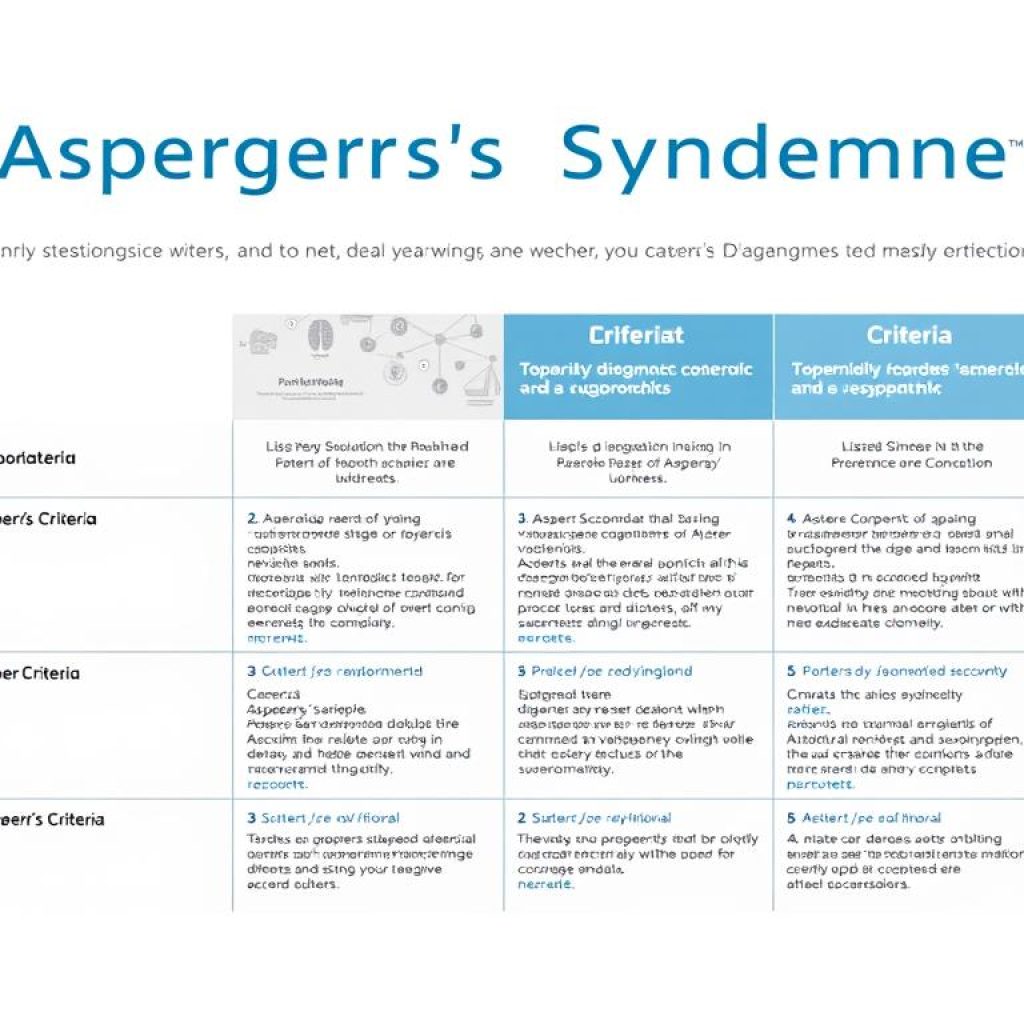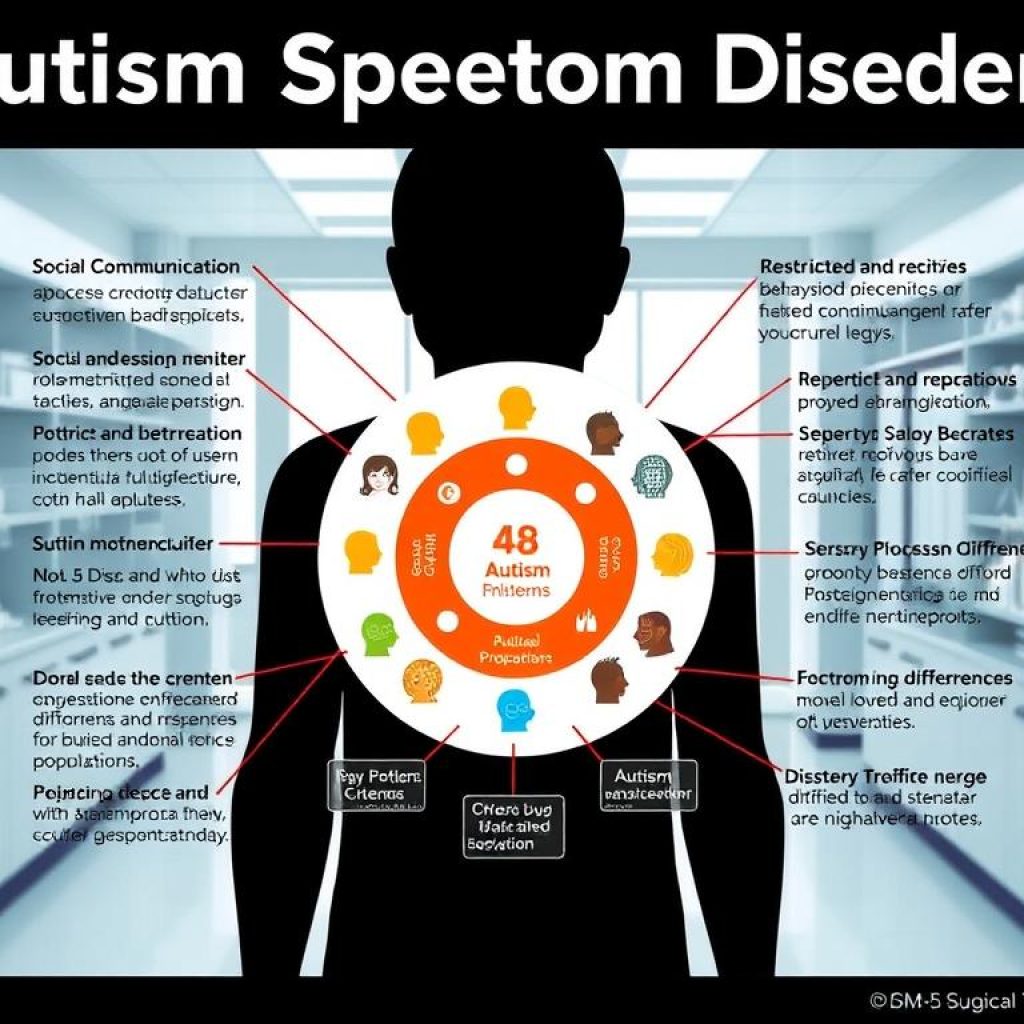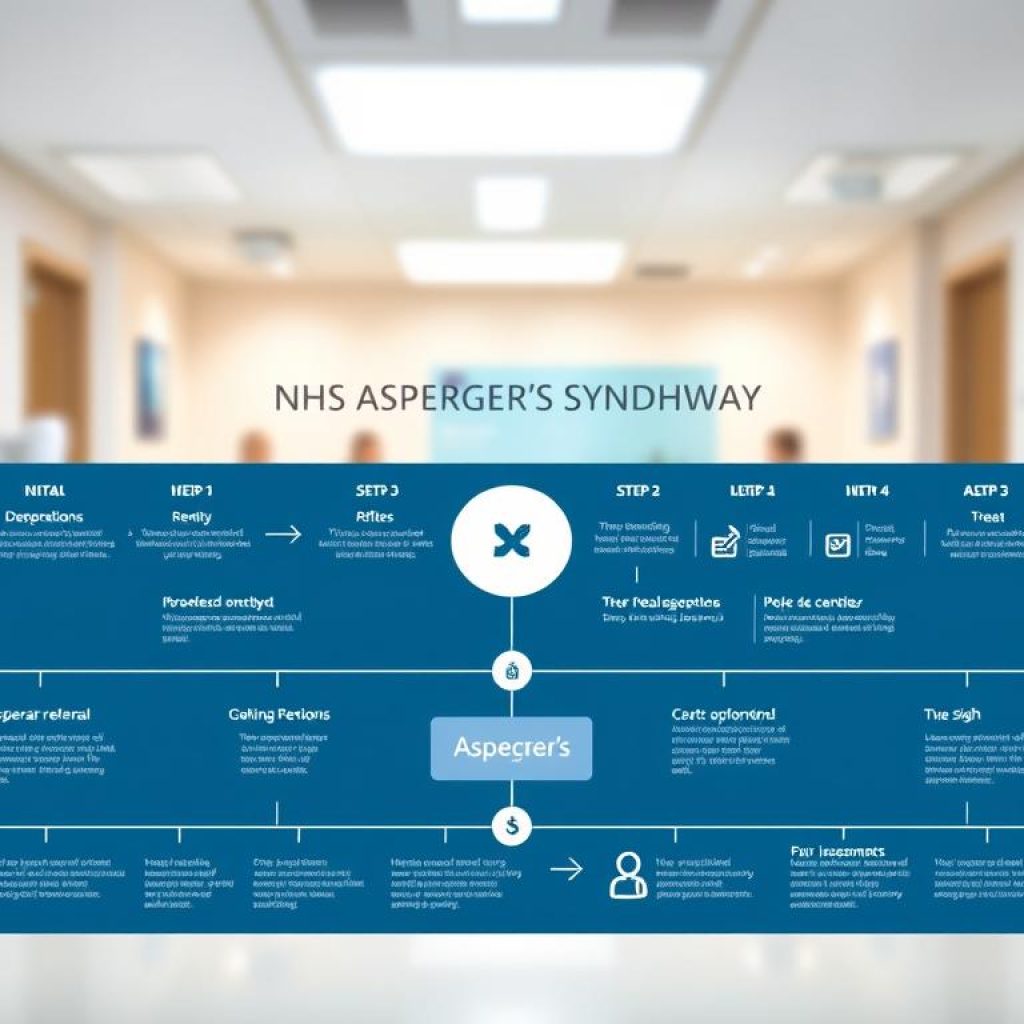The History and Evolution of Asperger’s Syndrome Diagnosis

The term ‘Asperger syndrome‘ was introduced to the field of autism research in the 1980s by the renowned British psychiatrist Dr Lorna Wing. This marked a significant milestone in understanding and diagnosing the condition.
The concept of Asperger’s Syndrome diagnosis has undergone considerable evolution over the years, influenced by advancements in medical research and changing perceptions of autism.
As our understanding of autism spectrum disorders continues to grow, it is essential to explore the historical context and development of Asperger’s Syndrome diagnosis.
Key Takeaways
- The term ‘Asperger syndrome’ was introduced by Dr Lorna Wing in the 1980s.
- The diagnosis has evolved significantly over the years.
- Advances in medical research have influenced the understanding of Asperger’s Syndrome.
- Changing perceptions of autism have impacted the diagnosis.
- A historical context is crucial in understanding Asperger’s Syndrome diagnosis.
The Origins of Asperger’s Syndrome
Asperger’s Syndrome has its roots in the pioneering work of Austrian paediatrician Hans Asperger. In the early 20th century, Asperger observed a distinct group of children who exhibited social and behavioural characteristics that differed significantly from their peers.

Hans Asperger’s Pioneering Work
Hans Asperger published an account of children with many similarities to Kanner autism but who had abilities, including grammatical language, in the average or superior range. His 1944 paper introduced the concept of “autistic psychopathy,” describing children with significant social integration difficulties despite having average or above-average intelligence.
The 1944 Paper and “Autistic Psychopathy”
Asperger’s 1944 paper was groundbreaking because it highlighted a previously unrecognised spectrum of autism. He described children who were socially awkward, had difficulty making friends, and exhibited stereotypical behaviours. These characteristics are now recognised as key features of Asperger’s Syndrome.
Key Characteristics Identified by Asperger
Asperger identified several key characteristics in the children he studied, including:
- Significant social difficulties
- Average or above-average intelligence
- Strong verbal skills
- Restricted interests
Early Case Studies and Observations
Early case studies and observations played a crucial role in shaping our understanding of Asperger’s Syndrome. Researchers and clinicians documented numerous cases of children exhibiting the characteristics Asperger had identified, further solidifying the concept of Asperger’s as a distinct condition.
“Asperger’s work was pioneering because it brought attention to a subgroup of individuals with autism who were previously overlooked.”
The accumulation of these case studies and observations laid the groundwork for later research into Asperger’s Syndrome, influencing diagnostic criteria and our overall understanding of the condition.
Historical Development of Asperger’s Syndrome Recognition
The journey of Asperger’s Syndrome from a relatively unknown condition to a widely recognized diagnosis is a fascinating story of medical evolution. Initially identified by Hans Asperger, the condition remained largely obscure until several decades later.

From Obscurity to Recognition
For many years, Asperger’s Syndrome was not widely recognized within the medical community. It wasn’t until the 1980s that the condition began to gain more widespread acceptance, largely due to the work of Lorna Wing, a British psychiatrist who played a pivotal role in raising awareness about Asperger’s Syndrome.
Lorna Wing’s work was instrumental in highlighting the condition and its characteristics. She pioneered the concept that autism exists on a spectrum, incorporating Asperger’s earlier observations into this broader understanding. Her efforts were crucial in bringing Asperger’s Syndrome to the forefront of autism research and diagnosis.
Lorna Wing’s Contribution to Asperger’s Awareness
Lorna Wing’s contributions to the field of autism and Asperger’s Syndrome are immeasurable. By championing Hans Asperger’s original work and integrating it into the broader context of autism spectrum disorders, Wing facilitated a more nuanced understanding of the condition. Her advocacy and research helped pave the way for the inclusion of Asperger’s Syndrome in diagnostic manuals, a critical step towards formal recognition.
Inclusion in Diagnostic Manuals
The inclusion of Asperger’s Syndrome in major diagnostic manuals marked a significant milestone in its recognition. The condition was eventually included in the ICD-10 and DSM-IV, providing clinicians with standardized criteria for diagnosis. This formal recognition was a crucial step in the Asperger’s assessment process, enabling more consistent and accurate diagnoses.
The historical development of Asperger’s Syndrome recognition is a testament to the collaborative efforts of researchers, clinicians, and advocates. Through their work, individuals with Asperger’s Syndrome are now better understood and supported, reflecting a significant advancement in the field of autism spectrum disorders.
Evolution of Diagnostic Criteria
The diagnostic criteria for Asperger’s Syndrome have undergone significant changes over the years, reflecting advancements in our understanding of the condition. This evolution is crucial for improving diagnostic accuracy and supporting individuals affected by Asperger’s.
ICD-10 Criteria
The ICD-10, published in 1992, was one of the first major classification systems to include Asperger’s Syndrome as an official diagnosis. The ICD-10 criteria for Asperger’s Syndrome emphasize qualitative impairments in social interaction and restricted, repetitive patterns of behaviour, interests, and activities. Unlike autism, there’s no significant delay in language development.
DSM-IV Criteria
The DSM-IV, released in 1994, also incorporated Asperger’s Disorder into its classification. The DSM-IV criteria for Asperger’s Disorder are characterized by severe and sustained impairment in social interaction and the development of restricted, repetitive patterns of behaviour, interests, and activities. A key distinction from Autistic Disorder is the absence of clinically significant delays in language development.
Differences Between Diagnostic Systems
While both the ICD-10 and DSM-IV provide criteria for diagnosing Asperger’s Syndrome, there are differences between the two systems. The ICD-10 tends to be more flexible, allowing for a broader interpretation of the diagnostic criteria. In contrast, the DSM-IV provides more specific criteria, potentially leading to more consistent diagnoses across different clinicians.
Symptom Thresholds and Specifications
The specification of symptom thresholds varies between the ICD-10 and DSM-IV, potentially affecting diagnosis. For instance, the severity and impact of social interaction impairments and restricted behaviours can influence whether an individual meets the diagnostic criteria.
Clinical Interpretation Variations
Clinical interpretation of the diagnostic criteria can also vary, influenced by the clinician’s experience and the individual’s presentation. This variability underscores the importance of comprehensive assessments and multidisciplinary teams in diagnosing Asperger’s Syndrome.
| Diagnostic Criteria | ICD-10 | DSM-IV |
|---|---|---|
| Qualitative Impairments in Social Interaction | Required | Required |
| Restricted, Repetitive Patterns of Behaviour | Required | Required |
| Significant Delay in Language Development | Not Required | Not Present |

The Comprehensive Asperger’s Syndrome Diagnosis Process
The comprehensive diagnosis of Asperger’s Syndrome necessitates a multidisciplinary approach, combining clinical insights with standardized assessments. Diagnoses were based on ICD-10 criteria, emphasizing the importance of a thorough evaluation process.

Clinical Assessment Methods
Clinical assessment methods play a crucial role in diagnosing Asperger’s Syndrome. This involves a detailed evaluation of the individual’s developmental history and behavioural patterns.
Developmental History Taking
Taking a thorough developmental history is essential, as it helps clinicians understand the individual’s developmental trajectory and identify any potential red flags for Asperger’s Syndrome.
Behavioural Observations
Behavioural observations are also vital, allowing clinicians to assess the individual’s social interactions, communication style, and repetitive behaviours.
Standardised Screening Tools
In addition to clinical assessments, standardized screening tools are used to support the diagnosis. These tools help clinicians to identify individuals who may be at risk of Asperger’s Syndrome and facilitate early intervention.
Multidisciplinary Approach to Diagnosis
A multidisciplinary approach is essential for accurate diagnosis, involving a team of professionals including psychologists, psychiatrists, speech therapists, and occupational therapists. This collaborative approach ensures that the individual receives a comprehensive evaluation and that all aspects of their functioning are considered.
| Diagnostic Team Member | Role in Diagnosis |
|---|---|
| Psychologist | Conducts cognitive and behavioural assessments |
| Psychiatrist | Evaluates mental health and provides medical diagnosis |
| Speech Therapist | Assesses communication skills and patterns |
| Occupational Therapist | Evaluates sensory processing and daily functioning |
Challenges in Asperger’s Diagnosis
The complexities surrounding Asperger’s diagnosis stem from a multitude of factors, including gender differences and cultural influences. Diagnosing Asperger’s Syndrome requires a comprehensive understanding of these challenges to ensure accurate and timely diagnosis.
Differential Diagnosis Considerations
Differential diagnosis is a critical aspect of Asperger’s diagnosis, as its symptoms often overlap with those of other neurodevelopmental disorders, such as autism spectrum disorder (ASD), attention deficit hyperactivity disorder (ADHD), and obsessive-compulsive disorder (OCD). Clinicians must carefully evaluate the individual’s symptoms to distinguish Asperger’s from these conditions.
A thorough diagnostic evaluation involves assessing the individual’s social communication skills, repetitive behaviors, and cognitive abilities. The use of standardized diagnostic tools, such as the Autism Diagnostic Observation Schedule (ADOS), can aid in this process.
| Diagnostic Tool | Description | Application |
|---|---|---|
| ADOS | Standardized assessment for autism spectrum disorders | Used in clinical and research settings |
| RAADS-R | Ritvo Autism-Asperger Diagnostic Scale-Revised | Self-report questionnaire for adults |
| AQ | Autism Quotient | Screening tool for adults and adolescents |
Gender Differences in Presentation and Diagnosis
Research has shown that there are significant gender differences in the presentation and diagnosis of Asperger’s Syndrome. Females with Asperger’s often exhibit different social communication styles and may be more adept at masking their symptoms, making diagnosis more challenging.
Female Presentation Patterns
Females with Asperger’s may display more subtle social communication difficulties and may be more inclined to mimic their peers, making it harder to detect symptoms.
Diagnostic Biases
Diagnostic biases can also play a role in the underdiagnosis of Asperger’s in females. Clinicians may be less likely to consider Asperger’s in females due to the prevailing stereotype that the condition is more common in males.
Cultural and Socioeconomic Factors
Cultural and socioeconomic factors can also impact the diagnosis of Asperger’s Syndrome. Different cultures may have varying levels of awareness and understanding of the condition, influencing the likelihood of diagnosis. Additionally, socioeconomic status can affect access to diagnostic services.

Asperger’s Diagnosis Across the Lifespan
Understanding Asperger’s syndrome diagnosis across the lifespan is essential for providing appropriate support and interventions. The diagnostic process varies significantly from childhood through adulthood, reflecting changes in an individual’s developmental stage and life circumstances.

Childhood Diagnosis
Diagnosing Asperger’s syndrome in children involves assessing social interaction, communication, and repetitive behaviours. Early diagnosis is crucial for initiating interventions that can significantly impact a child’s developmental trajectory. Early intervention can help mitigate some of the challenges associated with Asperger’s, enhancing the child’s ability to interact with their environment and peers.
- Observations of social and communication skills
- Assessment of repetitive behaviours
- Use of standardized screening tools
Adolescent Identification
During adolescence, the diagnosis of Asperger’s syndrome may involve reassessing individuals previously identified as having other developmental issues or identifying those whose symptoms have become more apparent. The challenges of adolescence, such as social pressures and academic demands, can highlight the need for a diagnosis.
Asperger’s Diagnosis in Adults
Diagnosing Asperger’s syndrome in adults presents unique challenges, including the need for retrospective assessment of childhood behaviours and experiences. Adults may seek diagnosis due to difficulties in personal or professional settings, or upon learning that their children have been diagnosed with autism spectrum disorder.
Late-life Diagnosis Experiences
Receiving a diagnosis later in life can be a complex experience, involving relief at having an explanation for past difficulties, as well as concerns about the implications for the future. Supportive counselling and guidance are crucial during this period.
Retrospective Assessment Challenges
Assessing an adult’s childhood behaviours retrospectively can be challenging due to the reliance on self-reporting and potentially limited availability of historical records. Clinicians must use a range of assessment tools and interviews to reconstruct an accurate picture of the individual’s developmental history.
The DSM-5 Paradigm Shift
The DSM-5 brought about a paradigm shift in how Asperger’s Syndrome is diagnosed and understood. Published in 2013, the DSM-5 introduced significant changes to the classification and diagnosis of autism spectrum disorders, including Asperger’s Syndrome.
One of the most notable changes was the removal of Asperger’s Syndrome as a distinct diagnosis. This change reflected a shift towards a more unified understanding of autism spectrum disorders.
Removal of Asperger’s as a Distinct Diagnosis
The decision to remove Asperger’s Syndrome as a separate diagnosis was based on the recognition that the boundaries between different autism spectrum disorders were not always clear-cut. Asperger’s Syndrome was often diagnosed in individuals who did not have significant delays in language development, but who still exhibited social interaction difficulties and restricted or repetitive patterns of behaviour.
By merging Asperger’s Syndrome into the broader category of Autism Spectrum Disorder (ASD), the DSM-5 aimed to simplify diagnosis and reduce confusion among clinicians and the general public.

Autism Spectrum Disorder Classification
The DSM-5 introduced a new classification system for Autism Spectrum Disorder, which is characterised by two main domains: social communication and social interaction, and restricted or repetitive patterns of behaviour. Individuals diagnosed with ASD are assessed on the severity of their symptoms in these areas.
This dimensional approach to diagnosis allows for a more nuanced understanding of an individual’s needs and provides a framework for tailoring support and interventions.
Implications for Individuals Previously Diagnosed
For individuals who were previously diagnosed with Asperger’s Syndrome, the change to ASD classification has had various implications. While some have expressed concerns about losing their distinct identity, others have welcomed the recognition of their experiences under the broader ASD umbrella.
It is essential for healthcare providers to support individuals with ASD, regardless of their previous diagnosis, by providing appropriate accommodations and interventions tailored to their needs.
Asperger’s Syndrome Diagnosis in the UK Context
Within the UK, the diagnosis of Asperger’s Syndrome is guided by specific NHS pathways. The National Health Service (NHS) provides a structured approach to diagnosing Asperger’s Syndrome, ensuring that individuals receive comprehensive assessments.
NHS Diagnostic Pathways
The NHS diagnostic pathways for Asperger’s Syndrome involve a multidisciplinary team of healthcare professionals, including psychologists, psychiatrists, and speech therapists. According to a study by Brugha et al. (2012) published in the NHS Information Centre, Community and Mental Health Team, the use of standardized assessment tools is crucial in the diagnostic process.
The diagnostic pathway typically begins with a referral from a general practitioner or other healthcare professional, followed by an initial assessment and subsequent comprehensive evaluation.

UK-Specific Assessment Resources
The UK employs various standardized assessment tools for diagnosing Asperger’s Syndrome. These include questionnaires, observational assessments, and cognitive tests. The NHS provides access to these resources, ensuring that diagnoses are made based on comprehensive evaluations.
UK-specific assessment resources are continually updated to reflect the latest research and diagnostic criteria, ensuring that individuals receive accurate diagnoses and appropriate support.
Current Diagnostic Approaches and Tools
Current diagnostic approaches for Asperger’s Syndrome involve a combination of clinical assessment and standardized tools. Diagnoses were based on ICD-10 criteria, emphasizing the need for precise and reliable diagnostic instruments.
Gold Standard Assessment Instruments
The diagnosis of Asperger’s Syndrome relies on gold standard assessment instruments that provide accurate and reliable results. Two widely recognized tools are:
- The Autism Diagnostic Observation Schedule, Second Edition (ADOS-2)
- The Autism Diagnostic Interview-Revised (ADI-R)
ADOS-2 and ADI-R
The ADOS-2 is a semi-structured assessment that evaluates social interaction, communication, and play in individuals suspected of having Autism Spectrum Disorder (ASD), including Asperger’s Syndrome. The ADI-R is a comprehensive interview conducted with caregivers to gather detailed information about an individual’s developmental history and behavioral patterns.
Other Validated Measures
In addition to ADOS-2 and ADI-R, other validated measures are used, such as the Social Responsiveness Scale (SRS) and the Asperger Syndrome Diagnostic Scale (ASDS). These tools help clinicians gather a comprehensive understanding of an individual’s symptoms and behaviors.
Neuropsychological Testing
Neuropsychological testing plays a crucial role in the diagnostic process, assessing cognitive functions, executive functioning, and other neurocognitive aspects. Tests such as the Wechsler Adult Intelligence Scale (WAIS) and the Wechsler Intelligence Scale for Children (WISC) are commonly used to evaluate cognitive profiles.

These diagnostic approaches and tools, when used in conjunction with clinical judgment, enhance the accuracy of Asperger’s Syndrome diagnosis.
Controversies and Debates in Asperger’s Diagnosis
The concept of Asperger’s syndrome has been mired in controversy and debate. Many patients and families, as well as advocates of the neurodiversity movement, were shocked when the diagnosis of Asperger’s Syndrome (AS) ceased to exist as a distinct identity-defining diagnosis.
This change reflects broader debates within the autism community and among professionals. The removal of AS as a separate diagnosis in the DSM-5 has been a focal point of contention.
The Neurodiversity Perspective
The neurodiversity perspective argues that conditions like Asperger’s syndrome should not be viewed as disorders but rather as natural variations in human cognition and behaviour. Advocates of this perspective contend that the diagnosis of AS provided a valuable identity for many individuals.
Neurodiversity encompasses a range of neurological differences, including autism spectrum conditions. Proponents believe that these differences should be accepted and accommodated rather than pathologized.
Diagnostic Validity Concerns
Concerns about the diagnostic validity of Asperger’s syndrome have also been a subject of debate. Some researchers and clinicians have questioned whether AS was sufficiently distinct from other autism spectrum disorders to warrant a separate diagnosis.
The use of Asperger’s diagnostic tests and other assessment tools has been scrutinized, with some arguing that these tools may not adequately capture the complexities of autism spectrum conditions.
Future Directions in Autism Spectrum Diagnosis
The field of autism spectrum disorder diagnosis is rapidly evolving, driven by advancements in medical research and diagnostic methodologies. Emerging trends point towards a more nuanced understanding, incorporating biomarkers and dimensional diagnostic approaches. As our understanding of autism spectrum disorders (ASD) deepens, it’s becoming clear that the future of diagnosis lies in a multi-faceted approach.
Biomarkers and Genetic Testing
Research into biomarkers for autism spectrum disorders is gaining momentum. Biomarkers are crucial for early detection and intervention, potentially identifying ASD before symptoms become apparent. Genetic testing is also becoming increasingly sophisticated, with studies indicating that certain genetic markers may be associated with an increased risk of developing ASD.
- Identification of specific genetic mutations associated with ASD
- Development of tests to detect these mutations
- Potential for earlier intervention through prenatal or neonatal screening
Dimensional Approaches to Diagnosis
The traditional categorical approach to diagnosing ASD is being complemented by dimensional approaches, which consider the spectrum’s complexity and variability. This shift acknowledges that individuals with ASD exhibit a range of symptoms and abilities, necessitating a more personalized diagnostic process.
By integrating dimensional assessments into the diagnostic framework, clinicians can provide a more accurate and comprehensive understanding of an individual’s condition. This approach has the potential to tailor interventions to the specific needs of each person, enhancing the effectiveness of support and treatment strategies.
Conclusion
The history and evolution of Asperger’s syndrome diagnosis have been marked by significant developments, from Hans Asperger’s pioneering work to the current diagnostic approaches.
The diagnostic criteria have undergone substantial changes, influenced by advancements in understanding autism spectrum disorders and the introduction of new diagnostic manuals.
The comprehensive diagnosis process involves clinical assessment methods, standardized screening tools, and a multidisciplinary approach, ensuring accurate identification and support for individuals with Asperger’s syndrome.
As the understanding of autism spectrum disorders continues to evolve, the diagnosis of Asperger’s syndrome remains a complex and multifaceted process, requiring a nuanced and informed approach.
In conclusion, the diagnosis of Asperger’s syndrome has come a long way, and ongoing research and developments in the field will continue to shape the understanding and diagnosis of Asperger’s syndrome.
